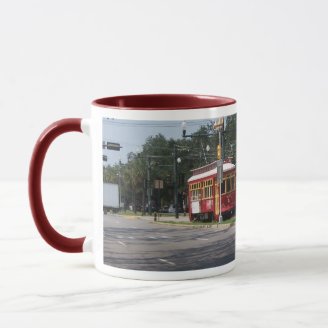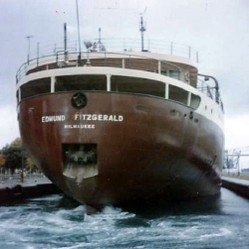Streetcars had two people in uniform when in operation. The operator stood in the center of the front, and drove the vehicle. The conductor stood in the rear and took the fare and dispensed transfers, small papers allowing a passenger to continue for the same fare on a connecting bus or streetcar. All boarding was done in the rear, and the front was the preferred exit point.
The seats were arranged with long bench seating facing the aisle on both sides of the front and the rear. Seating between these benches that each held three people were double seats facing forward. At the end of the line the workers change position, and as they walked the aisle, they pulled small handles which caused the back of the forward-facing seats to move so the seat reversed its direction. The seats were polished wooded slats, so thickness and weight were of no concern.
In the fifties the “screen” was still in use. It was a movable wooden sign that set in two holes in the back of a seat. This was to separate the races. The screen could never be placed past the last seat, nor ahead of the first seat.
Straps and rails overhead were for those who could not sit, since more passengers than seats were often carried.
A rope ran on the walls above the seats on both sides. This activated a buzzer when pulled, alerting the driver someone wanted to exit at the next stop.
Small plastic holders were placed on the walls, with small “Rider’s Digest” reading material.

















 The Linear Equation and Related Equations and Inequalitieson 08/15/2024
The Linear Equation and Related Equations and Inequalitieson 08/15/2024
 Understanding Calculus: A Simplified Approach to Derivativeson 08/05/2024
Understanding Calculus: A Simplified Approach to Derivativeson 08/05/2024
 Limits: Vital Building Blocks of Calculuson 08/01/2024
Limits: Vital Building Blocks of Calculuson 08/01/2024
 Mardi Gras Collectibleson 02/02/2023
Mardi Gras Collectibleson 02/02/2023



Comments
They seem to be very popular with tourists. Having grown up with them it is common to see them.
These streetcars are so beautiful! We have trams and trolleys in Bucharest too. Riding on trams is quite relaxing as they have many cars and they give a sense of space, given that they are never crowded.
The interiors are comparable,
In the days of the screen, it only impacted seating. All entered at the rear, which was where the fare was collected. exiting was allowed at either end, but the incoming people were an obstacle to the exiting people in the rear, so most opted for the front. This area was more accepting than Alabama.
blackspanielgallery, Thank you for the back-stories, front-stories and products. Are the interiors of the green comparably clean and comfortable to those of the red?
In the days of the screens, did dark-skinned riders have to pay at the front, exit and then enter by a back entrance?
Just this week, I watched the DVD of the 13th Doctor Who. Jodie Whittaker's Doctor went back in time to Alabama, where Rosa Parks and those deemed not white were shown paying the driver at the front, stepping outside and entering the rear by a separate door.
They are like full size buses, and were used as such. The sounds are like riding a railroad. It is a pleasant experience.
These streetcars look like mini bus. Love the old historical street cars and the wall art. Riding on the old ones is a unique experience. One can forget all the worries, sit and enjoy the slow rides across the town all day long, similar to a picnic.